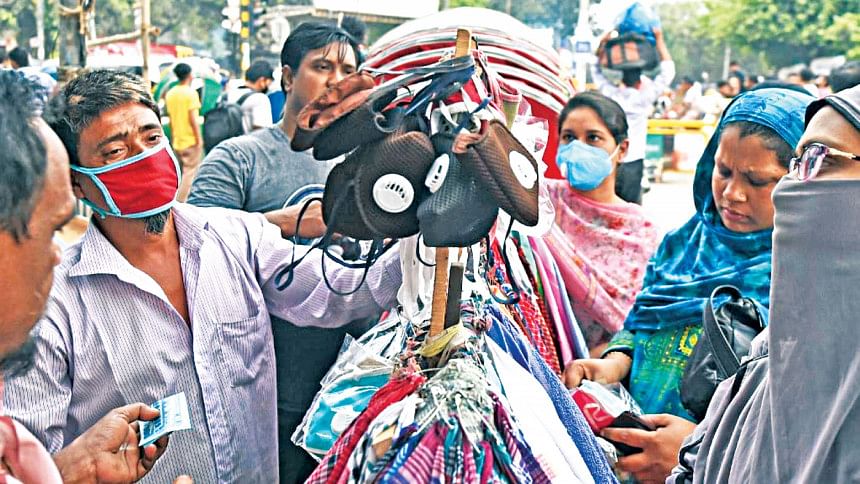Factors determining the 3rd wave of COVID-19 in Bangladesh

As cases of COVID-19 begin to peak in some parts of Bangladesh, health experts say a variety of factors, including the potential to develop immunity, whether the virus's transmission becomes seasonal, adherence to social distancing measures, and more will determine whether we shall face a third the wave of COVID-19 cases and how strong that wave could be. Amidst concerns over a possible third wave of COVID-19 pandemic, an easy approach to prevent it has to be listed. Among factors that could determine waves of the viral disease, one is virus-related and the second is human-related factors. The mutation of the virus is beyond our control.
Through COVID-19 appropriate behaviour, one can stop these waves. Underlining the importance of vaccination will help to prevent the infection. Even if one gets infected, then it will ensure that s/he does not get a severe form of the disease. This must be thought about, as the health officials are rallying to prepare for the COVID-19 third wave, predicted by many researchers and physicians. Apprehension is that the third wave of COVID-19 can strike Bangladesh in the next six to eight weeks. If COVID-19 appropriate behaviour is not followed, the third wave can happen even earlier. We need to work aggressively to prevent another large wave till vaccination kicks in. It would be wise to not to let your guard down. Otherwise, we will hit the third wave in no time.
History reveals that even the Spanish flu pandemic did have a third wave, so history seems to repeat itself. This is being said because of the number of variants and inappropriate behaviour among other things. Meanwhile, the delta variant of COVID-19 is infecting people in the United Kingdom (UK) in an exponential number as authorities were planning to reopen the economy. In Bangladesh, most of the cases are of delta variant. According to reports, the highly transmissible variant first identified in India is now making 99% of fresh COVID-19 cases in the UK. This variant is very quick to transmit.
Cross-border cooperation should be actively pursued and supported at all levels of government, to promote a coherent response recovery approach across a broad territory, border closure and reopening, containment measures, exit strategies, migrant workers – all these must be taken under proper planning. Bangladesh should consider adopting a place-based or territorially sensitive approach for measures to fight the pandemic. Places, where we see more cases like bordering areas, should be under strong surveillance.
Now, the million-dollar question is how to curb the third wave? Experts say the key to curbing additional waves of the new coronavirus will be increasing testing for the virus and continuing to implement and follow social distancing measures when necessary. Widespread testing and contact tracing are needed to determine who has been exposed to the virus, and those individuals must be isolated for 14 days.
Zoning total country into red, yellow, and green could be implemented for lockdown measures. We must do better, and we must avoid the third wave. This means getting stricter with lockdowns, procuring vaccines from whichever reliable source possible, and overall, making tough but unpopular decisions that, in the long run, will save the lives of millions of people. Before the coming Eid-ul-Azha, the chances of mutation increase due to the presence of more variants and gatherings. It is essential to control mass gatherings to avoid a new surge. It is now essential to go for ideal vaccination coverage and raise the coverage in all age ranges, e.g., mass vaccination should be started for persons below 40 years. Forgetting COVID-19 appropriate behaviour and becoming too complacent, we should prepare the hospitals again by ensuring a smooth supply of oxygen to the ICUs to tackle the third wave in Bangladesh.
The writer is a gerontologist and a public health specialist. E-mail: [email protected]

 For all latest news, follow The Daily Star's Google News channel.
For all latest news, follow The Daily Star's Google News channel. 



Comments